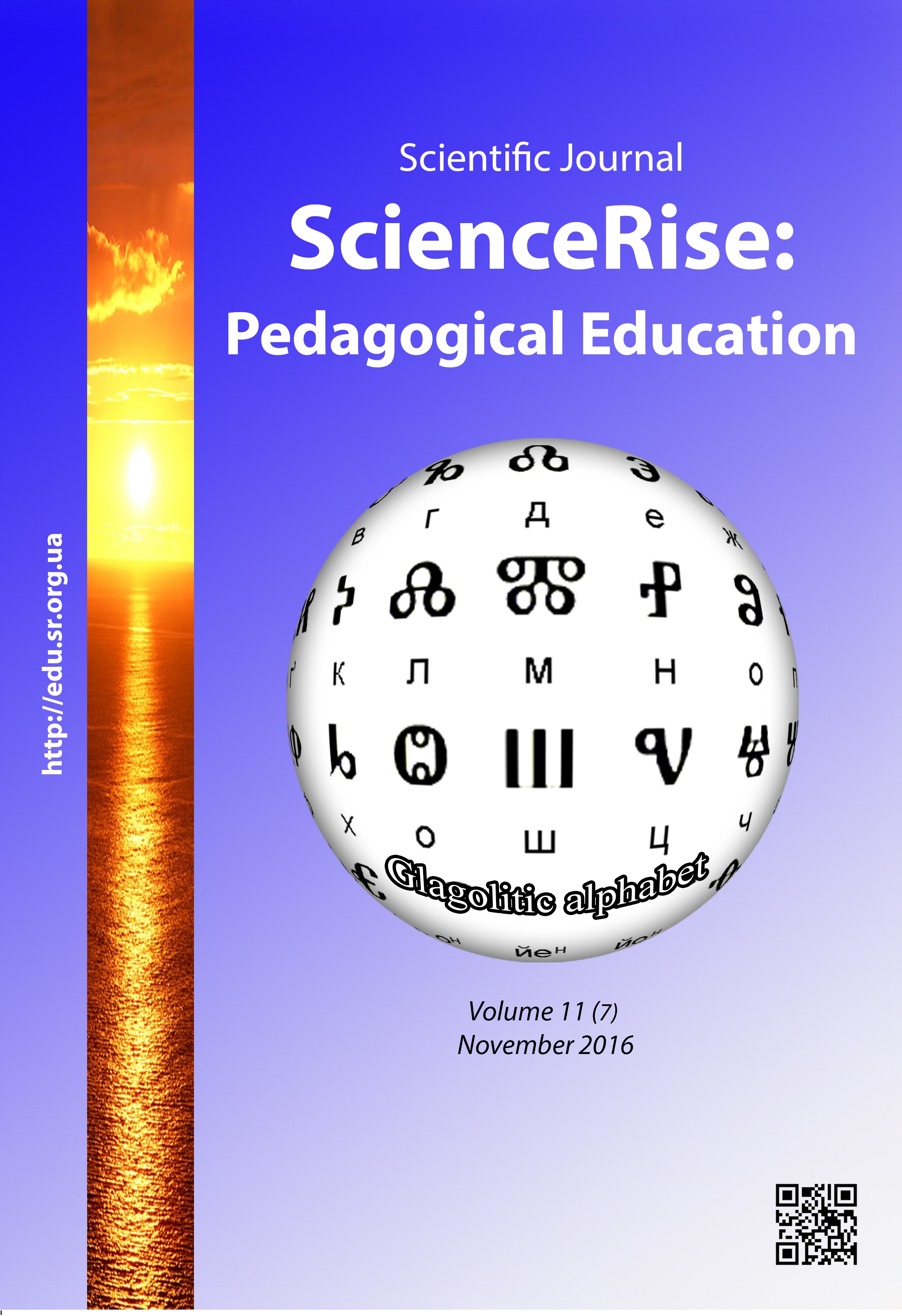The realization of diagnostic and correction-developing potential of art-therapy in social work with children from crisis families (including children with functional limitations)
DOI:
https://doi.org/10.15587/2519-4984.2016.84102Keywords:
value orientations, children with functional limitations, diagnostic potential of art-therapyAbstract
In this article we considered the features of diagnostic work with children from crisis families. We separately paid attention to the diagnostic methods and forms of the work on collection of information about the features of development of such child for providing the individual approach within psychological-pedagogical support and creation of effective conditions of personal formation. We considered in the aspects of scientific searches of the past and today the questions of value potential of psychological-pedagogical practice and art as the main constituents of formation in children from crisis families, especially the ones with functional limitations, value attitude to themselves, to the own health and emotions, to the society and living organization of own space, routine and distribution of time. We elaborated and presented the materials of art-therapeutical diagnostic projective graphic tests and preliminary results of constating stage of experiment. Such projective graphic tests favor the determination of the following need in formation or correction of already existent value attitudes and orientations of children that directly influence the attitude to the own life and the life of ther people. On the base of considered conditions of formation of constituents of the value attitude to the life and step by step diagnostics of the features of development of children from crisis families we presented the elaborated art-therapeutic method
References
- Sohan, L., Yermakov, H. (Eds.) (1997). Art life create personality. Chep. 1. Theory and technology of personality life creation. Kyiv, 392.
- Kilimnik, Y.; Tarasenko, H. (Ed.) (2013). Theoretical basis of humanistic values education of primary school children. Vinnitsa: LLC "Nilan Ltd", 2, 516.
- Ptashnik, N. (2011). Pedagogical conditions of formation of value orientation of primary school children in the out-of ethnology. Scientific notes VSPU. Series: Pedagogy and Psychology, 34, 405–409.
- Bech, I. (2003). Parenting Personality. Book 1. Personality oriented approach: Theoretical and technological bases. White Church: JSC "Bilotserkivska book factory", 278.
- Loschyts, Y. (1972). Scovoroda. Moskow: Young Guard, 224.
- Holod, Y. (2015). Narrative Techniques in Business Psychologist. Psychologist, 1 (553), 7–10.
- Zavhorodnya, N. (2007). The problem of socialization of pupils in modern pedagogical theory and practice. Management School, 6, 3–8.
- Khilya, A. (2012). The implementation of the diagnostic potential of art pedagogy in the process of studying value orientations of school-age children with special needs. Socio-pedahohycheskaya psyholohycheskaya and medical and support of personality development in ontogeny coll. Brest: Alternative, 182–185.
- Zakon Ukrayiny «Pro sotsial'ni posluhy» (2016). Verhovna Rada Ukrai'ny, 936-VIII. Available at: http://zakon0.rada.gov.ua/laws/show/966-15
- Karelyna, A. A. (Ed.) (2003). Psykholohycheskye tests. Vol. 1. Moscow: Humanyt. yzd. tsentr VLADOS, 312.
- Khilya, A.; Derkach, O. O. (Ed.) (2015). Travel the country "Yakiya": Parenting value attitude to life and children through component "I – identity" means Art-Therapy Editorial. Vinnitsa, 40.
Downloads
Published
How to Cite
Issue
Section
License
Copyright (c) 2016 Анна Вікторівна Хіля

This work is licensed under a Creative Commons Attribution 4.0 International License.
Our journal abides by the Creative Commons CC BY copyright rights and permissions for open access journals.
Authors, who are published in this journal, agree to the following conditions:
1. The authors reserve the right to authorship of the work and pass the first publication right of this work to the journal under the terms of a Creative Commons CC BY, which allows others to freely distribute the published research with the obligatory reference to the authors of the original work and the first publication of the work in this journal.
2. The authors have the right to conclude separate supplement agreements that relate to non-exclusive work distribution in the form in which it has been published by the journal (for example, to upload the work to the online storage of the journal or publish it as part of a monograph), provided that the reference to the first publication of the work in this journal is included.








